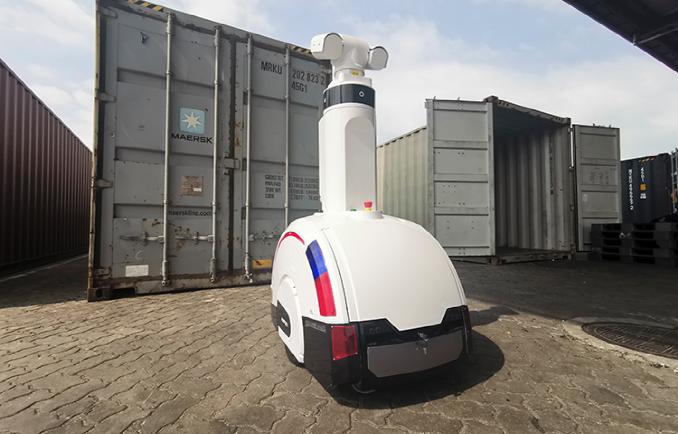

The inspection robot makes data acquisition and comparison at the control site.
As a reform measure of this year, Guangzhou Customs District has been piloting the “AR (Augmented Reality) + AI (Artificial Intelligence)” technologies in cargo control to enhance clearance efficiency at Nansha Pilot Free Trade Zone. And this application will soon be promoted all over the District.
By targeting business troubles in cargo clearance, the Customs combines the AR video technology with the AI algorithm to streamline the control process that’s implemented by robot. In the case of inspection, an assistant robot is used to inspect goods on the basis of mobile inspection device, reducing the inspection time and enterprise waiting time.
By means of the “AR+AI” technologies, the robot can do basic tasks such as data acquisition and comparison in advance and keep synchronous with customs ordering. Since the robot application, cargo inspection volume at the Nansha wharf has increased from 300 containers to 500 containers per day (12 hours).
In addition, the Customs also applies a “remote collaborative system” based on the 5G technology to the interaction between field inspection and background expert instruction. In the case of customs assessment, the field inspectors can use the “remote collaborative system” in their hand-held inspection devices to real-timely communicate with the background experts for the remote judgement.
Besides, Guangzhou Customs is also carrying out technological innovations in other fields such as post control, cross-border e-commerce, passenger clearance, and entry-exit quarantine in order to improve business environment and efficiency.
About GACC
Quick Links




